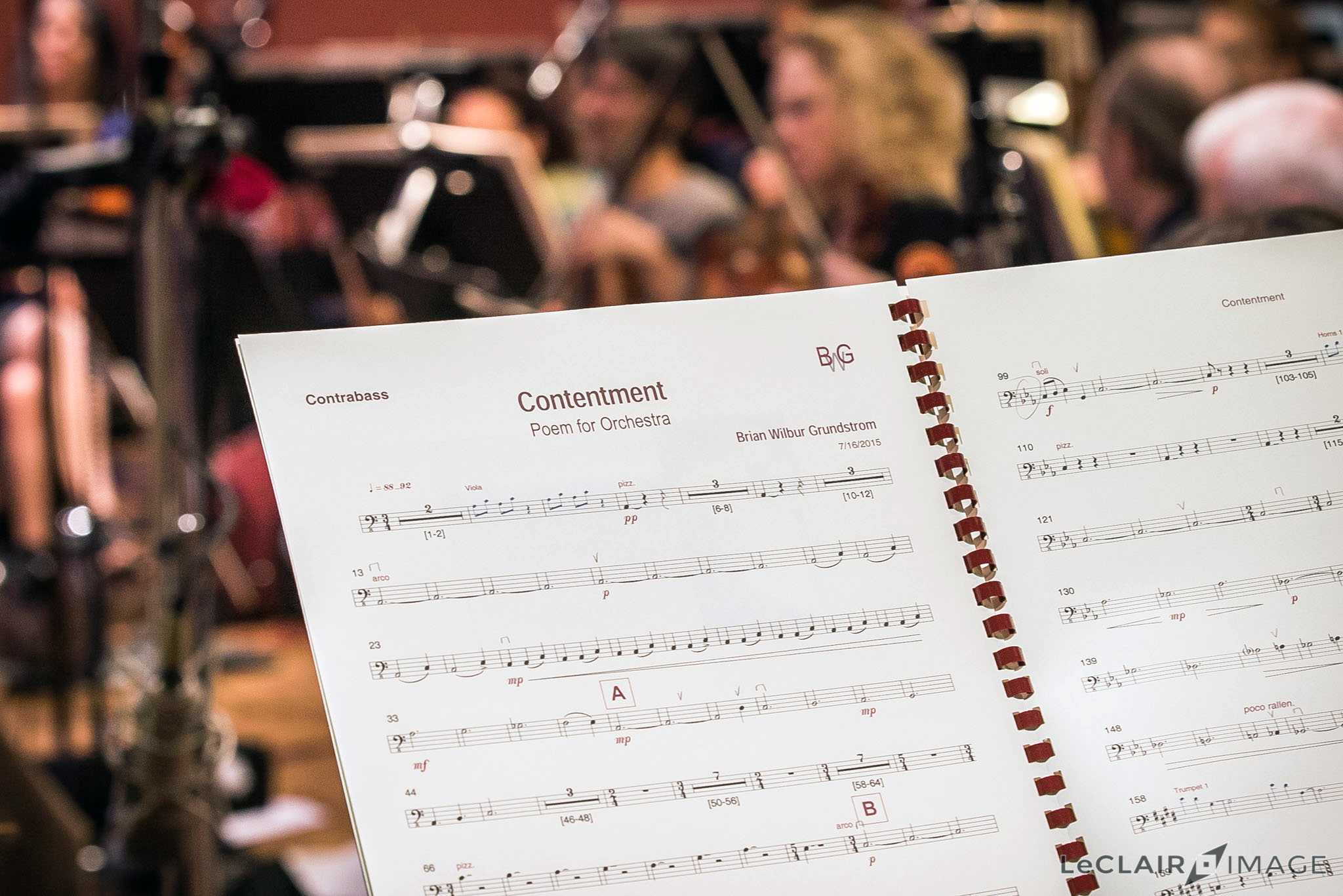Interview with Lucinda Dugger of the Copyright Alliance |
Good music doesn’t just happen for a film. It requires patience, persistence, and strong technical expertise. I chatted with Brian Wilbur Grundstrom, a composer for orchestra, piano, quintet and other ensembles, about the process of writing music for film. He puts it this way, “well-coordinated music to a film is like a good picture frame which enhances and completes the picture without drawing attention to itself.” But, just how does that happen? Brian says that the key is to figure out how the composer and the filmmaker can work best together. “Typically the director conveys the mood and how the music functions to the composer, and it is up to the composer to translate these clues into music,” he says. “I have found that creating a shared online document with descriptions about each musical cue is helpful in facilitating this collaboration.” Brian recently composed the score for the film, “Arc of Light: A Portrait of Anna Campbell Bliss”. Before reading the rest of the blog, I encourage you to watch the short one-minute excerpt. |
Not many of us would consider three weeks enough time to put a massive project together, much less one that requires substantial creativity and technical expertise. But, Brian felt like he had plenty of lead-time for this film when the Director Cid Collins Walker gave him three weeks to complete the score. Because Brian had established an early working relationship with Cid, he had the ability to develop themes even before the final video was locked into place. When he received the final footage, or “picture lock” as it is called in the industry, Brian was able to quickly get to work since he had already laid the ground for the music. “I write music directly to picture by loading the film into my sequencer,” says Brian. “This allows me to watch the picture as I write, so that I can time the music out perfectly to the picture.” “Arc of Light” is broken down into chapters, and the music that Brian composes for it reinforces this particular structure. Simple audio cues – such as when the music comes to a close at the end of each section and then starts afresh with the next one – help the viewer understand that a new chapter is starting. Similarly, while Brian’s compositions play off just a few themes throughout the film, each of the film’s chapters is different. He uses subtle differences each time a theme returns, such as employing different instruments, to evoke a range of feelings, but each sound echoes the overarching theme. “This way,” Brian says, “the music holds the film together without sounding repetitive.” The overall effect is one of a well-polished film. As an independent composer, Brian doesn’t often get an entire orchestra together to record his compositions, so he relies on a sample library to provide the recording. He prefers to use Vienna Symphonic Library and LA Scoring String. While these are pre-recorded samples, there is nothing synthetic about the music or notation. “Each note is recorded live, and these samples are re-assembled, as it were, to create music,” says Brian. “Furthermore, each note is recorded and played many different ways, which allows me to specify the exact articulation I desire for each note.” Through the touch of a button, Brian has available to him a wide variety of musical samples. For the string section alone, for example, he has access to solo, chamber, orchestra, and large orchestra string samples. Choosing the proper notes, articulations, and instruments is just the first step to producing a well-executed composition. Next, Brian has to master the recording so it sounds authentic. He does this by balancing the volume for each instrument. (Think of a symphonic conductor who is telling the violins to play quieter and encouraging the brass section to play more boldly during a crescendo.) Once the recording is mastered, the sound has to be further fine-tuned in order to portray properly the acoustics and the venue size. To do this, Brian uses technology to simulate placing each instrument on the stage in the exact place where it would be in a traditional orchestra-seating layout. He then provides a reverb, which alters the sound to simulate the exact environment where the symphony would be located if it were a live production. This could be any of a number of specific venues, from a small recording studio to a large concert hall or a church. Finally, any number of other mastering effects can be applied to the recording. Composers often use a limiter, which prevents the music from clipping or distorting if the volume becomes too loud, or compression, which is used to level out the volume for more consistent listening without continually adjusting the volume control (i.e. the quiet parts are increased in volume while the louder parts are reduced.) Once these finishing touches are put in place, the score is perfectly composed to not only enhance the visual, but also to take the viewer on a complete artistic experience. Now that you’ve read how the score is composed, I urge you to re-watch the excerpt above with a fresh eye and ear to the experience. |



